Ansel Adams Photography Books
14 Comments

Using his technical mastery in the darkroom to create distinctively beautiful prints, Ansel Adams considered print quality to be the hallmark of his work. However, Adams also developed early in his career a great familiarity with other forms of photographic reproductions, working diligently with publishers to create books that would meet his standards. Not only his prints are amongst the most beautiful made in the chemical medium, his books feature also some of the highest quality reproductions of photography in ink produced at the time of their publication.
Ranked consistently as one of the most popular photographers of the 20th century, Adams reached most of his audience through books. By 1979, more than a million of them had been sold. Even without taking into account instructional books, there are still several dozens of books of his photography. In this post, I survey those books currently in print (as of 2012). The next post will survey Ansel Adams instructional & autobiographical books.
With the exception of the first two books, all these titles were published after Ansel Adams passing in 1984. Adams had found in the 1970s a commercial publisher whose printing standards he was at least pleased with, Little, Brown & Co. Consequently, they were given exclusivity, which is continued today by the Ansel Adams Publishing Rights Trust. Most of the books follow a well-proven format. The book opens with a critical introduction, often written by John Szarkowski, the most influential photography curator of recent times, by William Turnage, the man responsible for Adams success in the marketplace – which did not come until he reached his 70s, or another trustee such as collaborator Andrea Stillman. Adams own writings are then represented either by a preface from an older book, or some other selected writings relevant to the subject of the book. The book designs are classical and clean, with no image cut by the gutter, and text limited to captions or short Adams citations. Reproductions are consistently good, but yet some are still better than others.
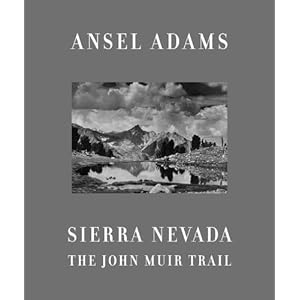 Sierra
Nevada: The John Muir Trail
Sierra
Nevada: The John Muir Trail
Although released in 1938 in an edition of only 500 copies, it is one of the most important Adams books. Adams first landscape photography book, published at the peak of his creative powers, was called a “landmark” in photography mechanical reproduction by Szarkowski. It came to existence as Walter Starr, a wealthy businessman, underwrote its great costs as a memorial to his son, who had died in a mountaineering accident. I learned in the Ken Burns National Parks series of the role the book had in helping establish Kings Canyon National Park. Adams sent a copy to Interior Secretary Ickes, who showed it to Franklin Roosevelt. The president was so impressed that he decided to keep the book for himself. Because of his disability, that would be his only way to see the mostly roadless terrain of the park. This book is an economical reprint. There is also a limited edition reprint costing $1,200, whose reproductions I guess are superior – a slight downside of this edition.
This book was first published in 1977, however, the second edition of 1981 improved reproduction quality significantly. It reproduces images by
portfolios, which were the main method Adams had his original prints
circulated. The book shows us Adams personal editing of his own work,
in which he balances consistency and variety, including a broader amount
of subject matter than the nature photography for which he is most
admired. It is also interesting to follow Adams development through
time, and see the original texts and even typefaces used for each
portfolio.
Although first published in 1990, this was actually Adams last book, begun two
years before his death at the suggestion of William Turnage, who was
also the president of the Wilderness Society. His introduction, as
well as the Adams quotes (printed on a paper stock different from the
reproductions), focus on Adams important role in conservation. Of all
the Adams books, this one is the largest in size (14×18 inches), which together with
very high production values, definitively help convey the power and
majesty of the photographs, mostly grand, dramatic landscapes made in National Parks. For this reason, and also for the quotes from the master, this book would be my first choice if you own only one Ansel Adams book.
In the 1940s, Adams received a
National Park Service commission, and then a Guggenheim Fellowship to photograph the National Parks.
If contemporary nature photographers are envious, they should remember
that Adams was a nature photography pioneer, and nobody has rivaled
him in his sustained practical efforts to support the
National Parks. Witness the writings in this book which,
besides reprints of the introduction to former books such as the seminal and rare “My camera in the National Parks”, include letters and memoranda to presidents and other major political figures. This
book is part of a economical, softcover small format series which
also includes Yosemite,
and The Grand Canyon and the Southwest.
 Yosemite
and the High Sierra *
Yosemite
and the High Sierra *
Ansel Adams is naturally associated with Yosemite. Since his first visit of the park at the age of fourteen, he would return every year throughout his life. It was there that he became a photographer, and made more photographs there than at any other place. He and his wife Virginia operated a gallery that continues to this day – the only one of its kind located inside a national park. Unsurprisingly, his best selling book was Yosemite and the Range of Light (1979). The first New York Graphic Society edition was a large book of 12×15 inches with more than 100 images which can be found at a bargain price on the used market. Its current successor is a medium-sized, more reasonably priced hardcover book, featuring 70 popular images. Following a somewhat predictable format, there are the Szarkowski introduction, Adams quotes, and selected writings consisting of introductions to older books from the same region from which images for this book were selected. Photographs of the Southwest complements this volume in a similar format.
I was a bit hesitant to include this book because it is a bit of an oddity amongst the others surveyed here. It is more about its subject than Adams photography. As several books are already devoted to the Sierra Nevada landscapes, this one does a good job of surveying many other places in Adams home state, in the process including many lesser known images – architecture and portraits as well. Instead of writings about Adams, you get writings about California by famous authors. I am not fond of the design, which makes the book look more like a travel book than an art book. Unlike in other books, the writings are not clearly separated from the reproductions (which are of very good quality). The choice of a vertical format does not work well because most images are horizontal. As a result, many images are reproduced too small (surrounded by white paper), or across the gutter – unlike in the other books.
Published in celebration of the 100th anniversary of Ansel Adams in 2001, this slipcased book is lavishly produced, extremely well printed on tritone. As a subjective attempt to “identify that work on which Adams’ claim as an important modern artist must rest”, this book concentrates almost exclusively on nature photography. However, within this limited scope, if you are familiar with Adams, you will discover a new facet of his work. First, although I am not sure if a centennial book is the right place, there was an effort to select seldom seen photographs, balancing landscapes and closer views, rather than emphasizing classic images – the most well-known are still there. Second, Szarkowski, also the curator for the exhibit from which the book is derived, often selected earlier prints where Adams used softer renditions than in his later (more well known) prints. This is illustrated by two examples of variations in the printing of Aspens and Denali. The Szarkowski essay is more reticent, controversial – and interesting – than the introductions he wrote for other books. However, see a brilliant and very critical review by Kenneth Brower of both the book and exhibit – Szarkowski’s response strikes me as unusually weak. Even though the trim is quite large, with the idea that small prints are reproduced smaller and large prints larger, many of the vintage reproductions end up quite small in the book (as they were in the exhibit). There is a considerably less expensive paperback version, but it is much smaller, which only compounds the problem. The hardcover would be a good choice for a second Ansel Adams book.
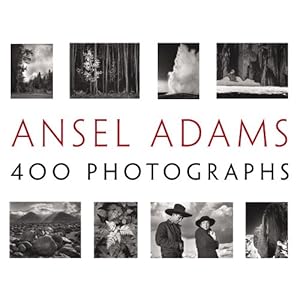 Ansel
Adams: 400 Photographs *
Ansel
Adams: 400 Photographs *
Published in 2007, this is a great value, as it presents the
largest selection of Adams images to date in a single book, encompassing all sorts of subject matter, organized chronologically from 1916 to the 60s, with good reproductions. All of his major work is here, as well as some images I had never seen before. The book is part of a new
series in a compact, thick, hardcover, landscape format, edited by
Andrea Stillman, who wrote notes on some selected
photos, as well as one-page introductions for each of the five periods that structure the book.
This is a revised and expended edition (137 plates) of a 1993 book of the same title about a less known aspect of Adams work. The book includes essay by John Schaefer about the color work of Adams, and selected writings by Adams himself about color photography, which are interesting for the thoughts about the medium. The format and dimensions are the same as “400 photographs”. Note, however, that the book doesn’t disclose that although he began to photograph in color soon after Kodachrome film was invented in the mid 1930s, Adams did not consider his color work to be important nor expressive. According to Alinder’s bio of Adams he even explicitly forbade any exploitation of his color work.
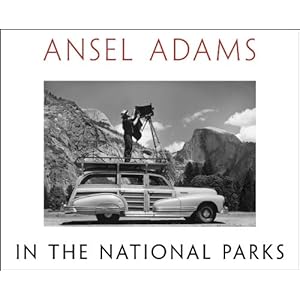 Ansel
Adams in the National Parks
Ansel
Adams in the National Parks
The third book in a format started with with “400 photographs”, it
continues the goal of the series, presenting more images (225 plates,
three times as many as “Our National Parks”)
of Adams work in the National Parks than other previously
published books. Besides essays by Woodward and Turnage about conservation photography, the notes by Andrea Stillman include a few outtakes
for some iconic photos, of which I would have liked to see
more.
Tenth Anniversary Update (2022)
 Ansel Adams in Yosemite Valley: Celebrating the Park at 150
Ansel Adams in Yosemite Valley: Celebrating the Park at 150
An oversized book (12×14″) issued in 2014 on the occasion of the
150th anniversary of the Yosemite Grant with 150 photographs edited and sequenced by Peter Galassi, former Chief Curator of Photography at The Museum of Modern Art, New York, whose introduction situates Adams’s photographs in the context of the history of photography in Yosemite.
 Ansel Adams’ Yosemite: The Special Edition Prints
Ansel Adams’ Yosemite: The Special Edition Prints
Prints made by Ansel Adams himself are expensive. So that visitors to Yosemite would have a chance to own an original print as a quality memento, in 1958 Adams selected six of his Yosemite images to be offered at affordable prices at his gallery in Yosemite Valley. The 8×10 prints would be made from the original negatives by an assistant and be printed in large batches. The collection turned out to be popular so that over the years Adams extended it to 30 images. Alan Ross, who contributes an essay in the book, has been printing the collection since 1975. Pete Souza’s qualification for writing the introduction is that his
Obama: An Intimate Portrait is the best selling photography book in history.
The images are all by Ansel Adams, but his name doesn’t even appear on the cover. How is it possible? This is Mike Mandel’s book, in the vein of his and Larry Sultan’s groundbreaking
Evidence (1977) where they gave a new meaning to found images from government agencies and tech corporations via curation and sequencing.
Although William Turnage’s carefully crafted image of Ansel Adams as a photographer of iconic nature landscapes was instrumental to the financial success of his later years, Adams didn’t view himself that way. Mandel mined an archive of more than 50,000 images from Adams’s commercial and editorial assignments, resulting in an entirely unexpected view of his work. Ansel Adams’s Zone System ranged from Zone 0 (darkest black) to Zone 10 (brightest highlight).
Have I missed anything ? Which ones are your favorites ?
Part 1 of 5: 1 | 2 | 3 | 4 | 5


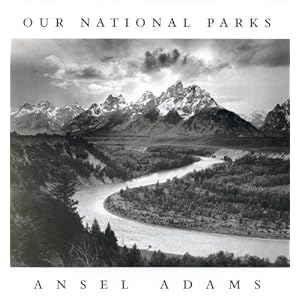


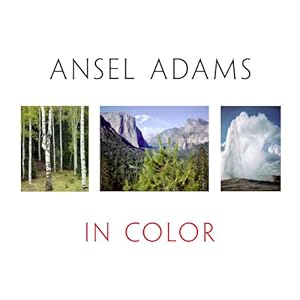



Great selection. I have a few others on my shelf —
Classic Images, published while he was still alive.
Yosemite and the Range of Light, also published while he was still alive.
An Autobiography, and Letters, both both finished and published shortly after his death.
The biography by Mary Street Alinder, while obviously not his work, is a fascinating look at the life of Ansel Adams.
Nice collection QT. I have his biography by Mary Alinder.
Thanks, great selection! My favorite is “The Making of 40 Photographs”. Its so eye opening to read his words on these images and how they were made.
Thanks for the comments. “40 images” is great both for photographs and writings. I’ll write about the (auto)biographical and technical books in another post which will focus on Adam’s oeuvre as a writer.
I find well-curated and well-printed photography books to be incredibly inspiring and you’ve definitely included most of my favorites featuring Ansel Adams’ work. I agree with Paul Beiser about “The Making of 40 Photographs”. It’s a must-have for any library.
Great post, QT. I’ll probably refer to this post from one or two of mine in the future. You are missing probably THE most important and definitely the most famous one: “This Is The American Earth,” that started it all, but that was not exclusively an Ansel Adams book. That was a Sierra Club book as described in my series of posts starting with: http://landscapephotographyblogger.com/photography-history/sierra-club-books-exhibit-format-series-1/ The second post in my series will concentrate almost exclusively on “This Is The American Earth.” I look forward to your further posts regarding the Basic Photo Series. Maybe you will do a post on “This Is The American Earth” too…?
David, thanks for pointing attention to “This Is The American Earth”. I agree with you about its importance. Because there are so many Ansel Adams books, I’ve arbitrarily limited this survey to books in print.
That’s what I figured, also it was not a Little Brown or an Ansel book per se. What about the autobiography too though? The one with the photographs? I have both the paperback w/o photos and the hardbound with photos. I wonder why they let “This Is The American Earth” go out of print. It was just reprinted again in 1999, which is not that long ago. I guess you know Bill Turnage has a real hate streak for the David Brower legacy, even though DB and AA became friends again late in life. That’s what I’ve heard from a highly reliable source anyway. Maybe they want to let news of the Exhibit Format Series die. From another very reliable source, one who was there when it all happened, Ansel was condemning of the series as soon as it went to color. I don’t intend that to cast Ansel in a bad light. I’m just repeating what someone else said. Everything I do and say puts Ansel in a good, highly positive light, because he did that for many, many others and the whole medium. I have great respect for him and will only sing his praises in anything I write on my sites or books because Dad loved and respected him so much.
David, although there is an illustrated version, the meat of the autobiography is writing rather than photographs, therefore I’ll cover it in the subsequent post. I don’t plan to review “This Is The American Earth”, feel free to post a link to your blog for this. Regarding the exhibit series, aren’t all the books out of print anyways ? Adams made little mystery of his disdain for color photography.
Thanks for this amazing review of all these great books by Ansel Adams!
You missed this one: http://www.amazon.com/Photographs-Manzanar-Ansel-Adams/dp/1477513981/ref=sr_1_1?ie=UTF8&qid=1393100535&sr=8-1&keywords=ansel+adams+manzanar
And the Polaroid book had some fine examples of his Polaroid work.
Thanks for pointing out Manzanar, this is an aspect of his work which is often overlooked, so I am glad this is available. I have the Polaroid book, but would have included it in Part 2 of the survey because it has a lot of writing. I did not do so because the medium is almost obsolete.
Thanks for such a complete list! Ansel Adams photography really inspires me to get out into the backcountry, and explore california. I’m going to support my local Spellbinder books in Bishop, but this is a great reference for a place to start collecting.
For collecting, don’t forget that there are many excellent out of print Ansel Adams books which I haven’t mentioned here.